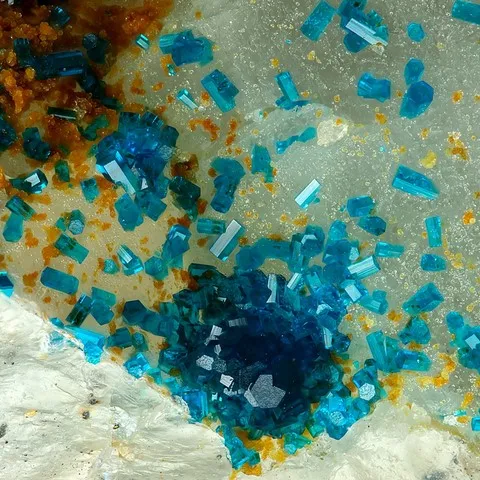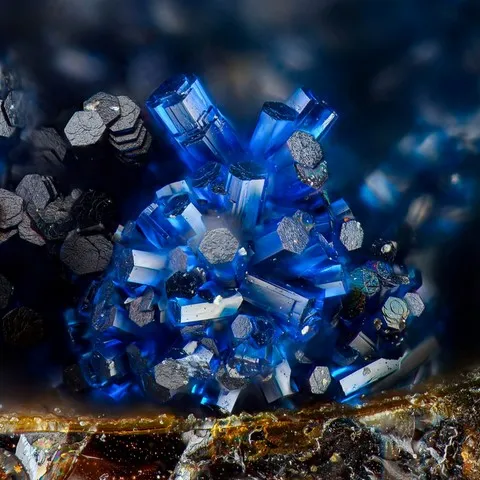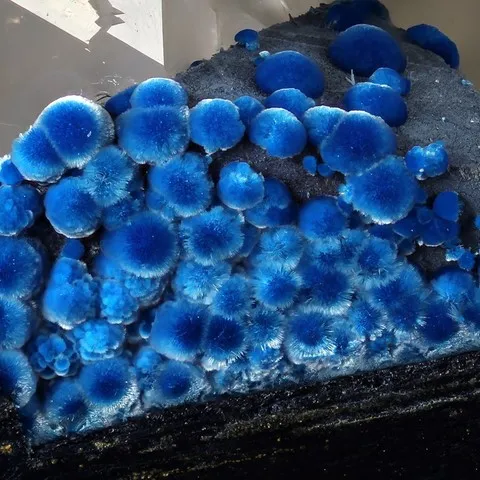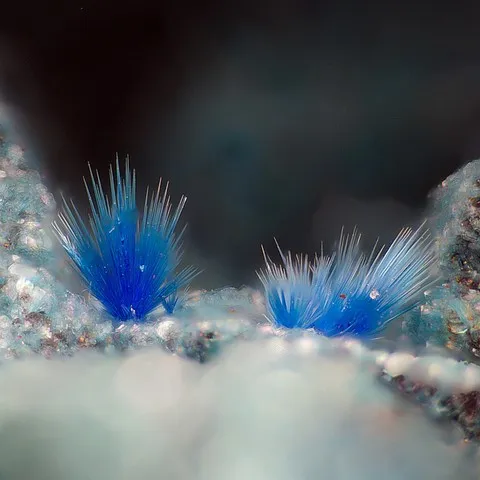CONNELLITE
Class : Halides
Subclass : Oxychlorides
Crystal system : Hexagonal
Chemistry : Cu19Cl4(SO4)(OH)32 3H2O
Rarity : Rare
Connellite is a hydrated sulphate from the oxidation zone of copper deposits, it is also present in neoformations in foundry slag. It was named in honor of the Scottish Arthur Connell, professor at the University of St Andrews and who was the first to study it. It appears in tufted or radiated aggregates of fine striated acicular crystals, of a beautiful azure blue to royal blue, sometimes blue-green color.
Main photo : Connellite from Penberthy Croft Mine, St Hilary, Cornwall, England © Steve Rust
Connellite in the World
Twinning
No twin known for this mineral species.
Fakes and treatments
No fake identified for this mineral species.
Hardness : 3
Density : 3.36
Fracture : Irregular
Streak : Light blue
TP : Transparent
RI : 1.724 to 1.758
Birefringence : 0.026
Optical character : Uniaxial +
Pleochroism : None
Fluorescence : None
Solubility : Acids and ammonia
Magnetism : None
Radioactivity : None





